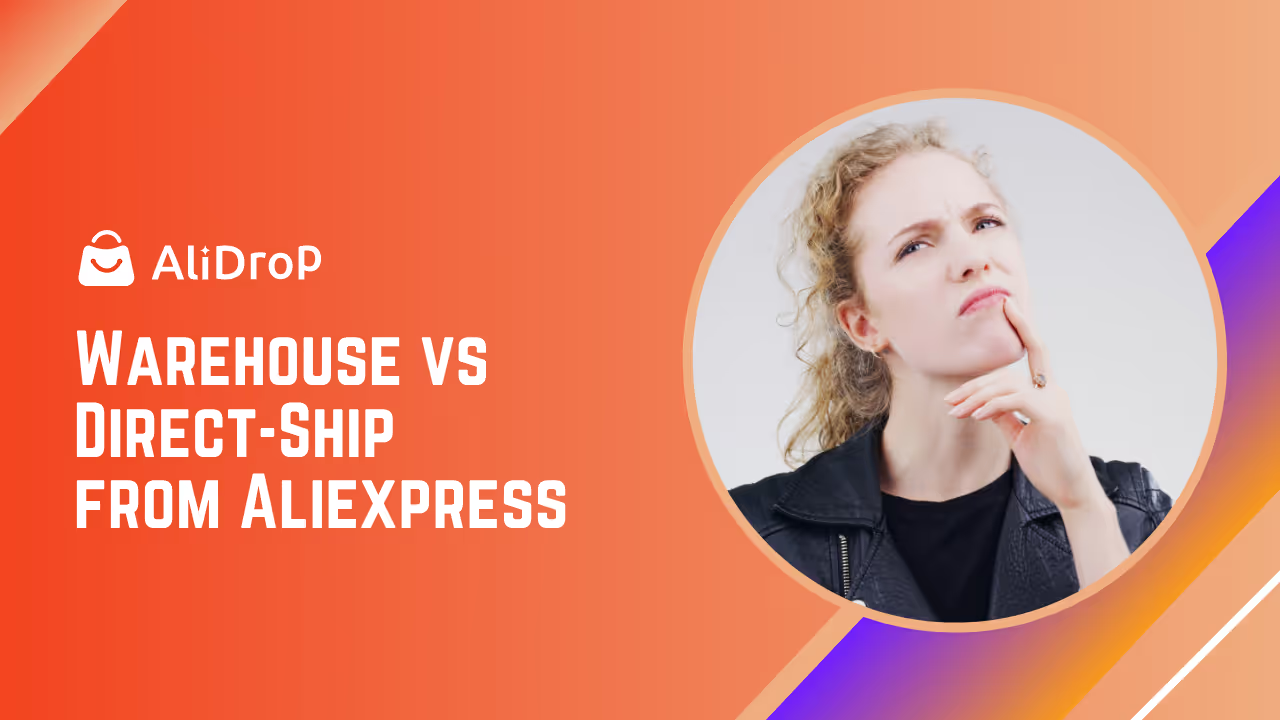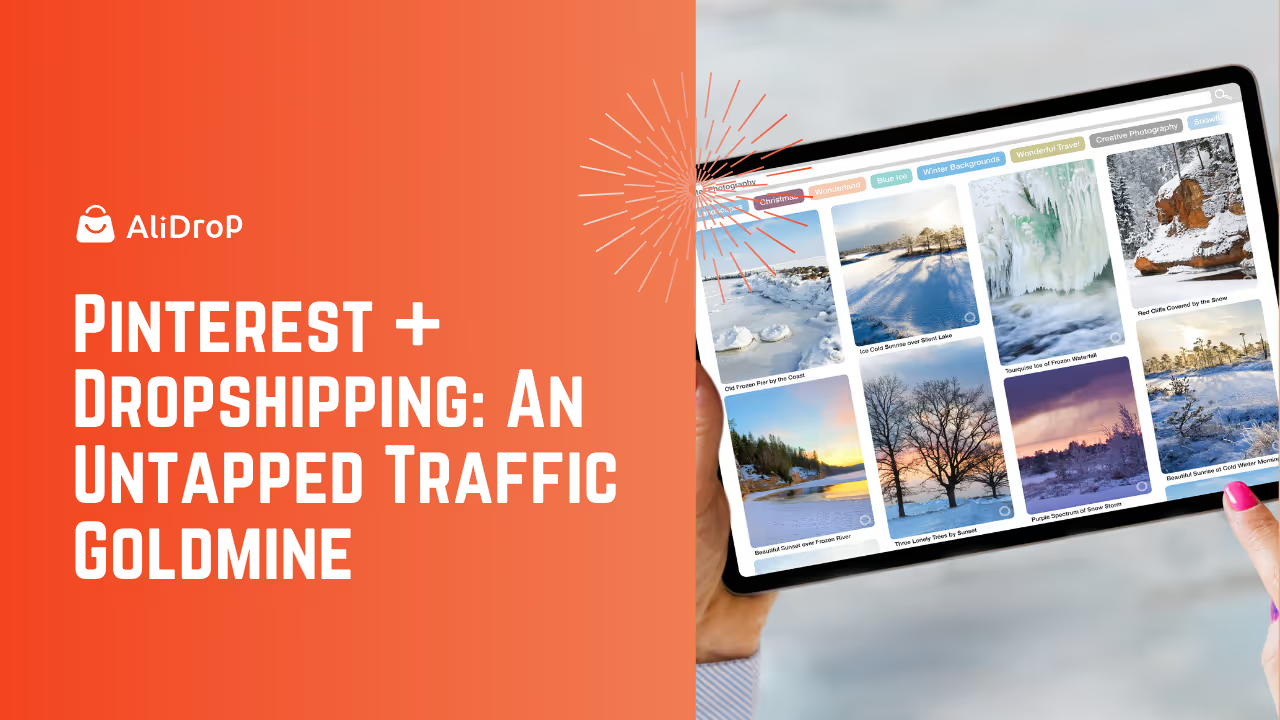Many dropshippers invest most of their energy in paid ads and social platforms that offer instant visibility. Yet few realize that Pinterest can quietly become one of their most reliable sources of visitors and sales.
Pinterest functions differently from typical social media. It is a place where users search for ideas, inspiration, and solutions. That intent-based behavior makes it an ideal environment for showcasing visually appealing products and driving visitors to your store.
If you have been wondering how to use Pinterest for dropshipping, this guide explains the complete process step-by-step. You will learn how to create a professional business profile, design attractive pins, and build a sustainable marketing funnel that brings people from discovery to purchase.

Why Pinterest Matters for Dropshipping
Pinterest stands out because it encourages discovery. Instead of interrupting users with ads, it lets them find ideas that naturally fit what they want. For dropshipping stores, that means you can present your products in an environment where shoppers are already open to exploring new items.
Pinterest also allows long-term content growth. A pin you post once can appear in search results months later, sending ongoing traffic to your store without any additional spend. This evergreen potential is rare among social channels and valuable for building consistent reach.
Finally, the platform remains less saturated than others. While many online sellers compete heavily on Facebook or TikTok, Pinterest still leaves room for new stores to gain traction organically.
How to Use Pinterest for Dropshipping
Learning how to use Pinterest for dropshipping starts with understanding that the platform is built for discovery, not interruption. Unlike traditional ads that compete for attention, Pinterest allows you to present your products naturally through inspiration and ideas.
The key is to combine creativity with structure — building a consistent presence, optimizing for search, and designing pins that spark curiosity. When done correctly, Pinterest can become a reliable source of long-term, organic traffic that steadily brings interested shoppers to your dropshipping store.
1. Set Up Your Business Account
Start by creating a Pinterest Business Account. It gives you access to analytics, advertising options, and website verification.
When you set up your profile, focus on clarity and consistency:
- Use your store or brand name as the account name.
- Upload a simple, recognizable logo.
- Write a concise bio describing what your store offers.
- Link your website and verify the domain.
A completed profile looks trustworthy, improves search performance inside Pinterest, and ensures that all your pins point back to your website.
2. Understand Your Audience and Niche
Pinterest revolves around ideas and lifestyle categories. Before posting, determine what kind of content fits your niche. If you sell home décor, your audience might search for interior design ideas or seasonal decorations. If you sell beauty items, they might look for self-care routines or styling tips.
Use Pinterest’s search bar to see what phrases people type related to your niche. The suggested terms show what users actually want. Incorporate those words naturally into your pin titles and descriptions.
This research phase helps you shape every board and pin around topics that your audience already explores, making it easier to attract genuine interest.
3. Create Boards with Purpose
Boards organize your content and tell Pinterest’s algorithm what your brand represents. Each board should focus on a theme that relates directly to your products.
Examples include:
- Minimalist Home Ideas
- Cozy Living Room Essentials
- Daily Skincare Favorites
- Fashion Accessories for Everyday Wear
Add clear titles and short descriptions containing keywords that describe what people can expect from the board. Curate 15–30 pins per board so it looks active and relevant. Mix your own pins with complementary third-party content to make the boards useful and engaging.
4. Design Pins That Catch Attention
Pinterest is visual, so presentation determines success. Each pin should be clean, vertical, and easy to read.
Guidelines for effective design:
- Use bright yet natural lighting.
- Keep the image ratio vertical (2:3 or 1000 × 1500 pixels).
- Add short text overlays summarizing the benefit or idea.
- Maintain consistent colors and fonts that match your brand.
- Include your logo subtly at the corner for recognition.
Every pin should link to a specific product page or a blog post that naturally leads to a product. Over time, a library of consistent, branded pins will communicate trust and reliability to your audience.
5. Write Search-Friendly Titles and Descriptions
Pinterest works much like a search engine. The right keywords help your pins appear in relevant results.
For every pin:
- Write a clear title describing what the viewer will gain.
- Use keywords naturally in the first sentence of your description.
- Add one or two relevant hashtags.
- Avoid keyword stuffing — focus on readability.
Example: Looking for creative ways to decorate your workspace? Explore minimalist desk accessories and learn how to use Pinterest for dropshipping to grow your online business.”
Good descriptions make your pins searchable and persuasive at the same time.
6. Post Regularly and Stay Consistent
Consistency determines visibility on Pinterest. Frequent pinning signals to the platform that your account is active and reliable.
Create a schedule where you post multiple times each week. You can use scheduling tools to automate uploads and maintain rhythm. Over time, consistent posting increases impressions, follower growth, and website clicks.
Rather than focusing on daily volume, focus on steady quality. A few well-designed pins posted consistently will perform better than random bursts of content.
7. Mix Organic and Paid Pins
Organic pins build long-term visibility, while paid pins help you reach new audiences faster. A balanced approach produces steady growth.
Organic Pins
- Post lifestyle-based and inspirational content.
- Showcase product benefits in a natural setting.
- Engage by repinning related content and responding to comments.
Promoted Pins
- Run small ad campaigns targeting interests or search terms.
- Retarget visitors who have viewed your products but not purchased.
- Test several creatives and monitor which ones get clicks.
You do not need a large budget; start modestly, analyze performance, and expand gradually once you know what works.
8. Connect Pinterest to Your Store
Integrate Pinterest with your ecommerce platform so that sharing becomes seamless. Add “Save to Pinterest” buttons on product pages and blogs. When visitors pin your content, they help distribute it to their followers, giving you organic reach without extra effort.
Ensure that each product page includes high-quality images and clear descriptions so that any saved pin appears professional when shared on Pinterest.
9. Analyze and Refine
Your Pinterest Business Account includes analytics showing impressions, link clicks, and engagement. Review these insights regularly.
Ask yourself:
- Which pins bring the most visitors?
- Which boards gain the most saves?
- Which product categories generate conversions?
Use this data to focus on what works. Remove outdated or underperforming pins, refresh older ones with new designs, and test new ideas based on current trends.
Refinement is an ongoing process. The more attention you give to performance metrics, the stronger your results will become.
Best Practices for Pinterest Success
Achieving consistent results on Pinterest requires more than just posting attractive visuals — it demands strategy, structure, and patience. To make the most of Pinterest for dropshipping, you need to focus on creating content that inspires rather than sells, engages users at every stage of their journey, and builds brand trust over time.
The following best practices will help you establish a strong foundation, optimize your workflow, and turn Pinterest into a reliable source of organic traffic and sales for your dropshipping business.
Focus on Lifestyle Storytelling
Pinterest users respond to inspiration more than direct selling. Present your products as part of a lifestyle rather than a simple item for purchase.
If you sell fitness accessories, create pins showing complete home-workout setups. If you sell décor, show cozy room scenes rather than plain product shots. Context helps users imagine how your product fits into their life.
Use Seasonal and Evergreen Content
Plan content around both enduring topics and seasonal moments. Evergreen pins continue to perform throughout the year, while seasonal ones capture temporary spikes in interest.
For example:
- Evergreen: Organize Your Home Office
- Seasonal: Holiday Gift Ideas for Minimalist Homes
Scheduling a mix ensures steady traffic all year.
Create Educational Pins
Informational or how-to pins perform well. A short guide such as “How to Style a Small Bedroom” or “Ways to Make Your Morning Routine Simpler” builds authority and attracts engagement.
If the topic aligns with your products, link directly to the related items in your store. Education adds value before asking for a sale.
Build Trust with Authenticity
Avoid over-edited photos or exaggerated claims. Pinterest users prefer genuine, attainable ideas. Use real product photography whenever possible. Consistency between your pins and your store builds confidence and increases conversion rates once visitors arrive.
Engage with the Community
Engagement increases visibility. Follow relevant creators, comment on similar boards, and share complementary content. This activity tells Pinterest’s algorithm that your account participates in the platform, which can improve distribution of your own pins.
Common Mistakes to Avoid
Even though Pinterest can be a powerful marketing tool for dropshipping, many store owners struggle to see results because they overlook key fundamentals. From inconsistent posting to weak visuals and poor optimization, small errors can significantly limit your reach and engagement. Understanding the most common mistakes will help you avoid wasted effort, stay aligned with Pinterest’s algorithm, and build a sustainable traffic source that truly benefits your dropshipping business.
Posting Without Strategy
Random pins without alignment to your niche confuse both users and the algorithm. Always connect your content to a clear goal — whether traffic, brand awareness, or sales.
Neglecting Keywords
Ignoring search optimization prevents your pins from being discovered. Incorporate relevant phrases naturally in titles, descriptions, and board names.
Inconsistent Posting
Posting occasionally limits growth. Consistency signals reliability, helping your pins surface in more feeds.
Using Low-Quality Images
Poor visuals reduce engagement. Ensure every image is sharp, properly lit, and fits Pinterest’s vertical format.
Overpromoting Products
Excessive self-promotion can alienate users. Balance product pins with inspirational or educational ones to maintain interest.
Building Long-Term Growth on Pinterest
Growth on Pinterest happens gradually. Treat it as a long-term marketing channel rather than a quick-response ad platform.
A single pin can continue to generate traffic months after posting. That means every effort compounds over time, creating a library of content that works for you continuously.
To maintain momentum:
- Refresh older pins with updated visuals.
- Expand into new keyword categories.
- Monitor analytics monthly.
- Keep improving your store to convert the visitors you gain.
Final Thoughts
Pinterest remains one of the most effective yet underused channels in ecommerce marketing. It combines organic discovery, evergreen reach, and an audience actively looking for inspiration.
For dropshippers, it offers a sustainable alternative to expensive paid advertising. By investing time in well-designed visuals, keyword-rich content, and consistent posting, you can create a marketing engine that works quietly in the background, bringing qualified visitors to your store day after day.
Now that you understand how to use Pinterest for dropshipping, begin applying the steps one at a time. Create your business account, design your first set of pins, and link every piece of content back to your AliDrop store. Over time, this steady approach will build awareness, trust, and sales — all powered by a single platform built on ideas and inspiration.
Start optimizing your Pinterest presence today and let AliDrop help you transform inspiration into income.
FAQs About Using Pinterest for Dropshipping
How can Pinterest help my dropshipping business grow?
Pinterest helps your dropshipping business grow by driving consistent, organic traffic through visual discovery. Each pin acts as a long-term traffic source that continues to generate clicks and sales over time. By posting valuable, search-optimized content, you attract engaged shoppers who are already looking for products like yours.
What type of content performs best on Pinterest for dropshipping?
Visually appealing, lifestyle-focused content performs best. Instead of direct product ads, share images that show how your products fit into everyday life — such as style ideas, décor inspiration, or problem-solving guides. This approach encourages users to save, share, and click through to your store.
How often should I post on Pinterest to see results?
Consistency is more important than frequency. Aim to post at least a few pins every week, keeping your boards active and relevant. Over time, this steady activity signals to Pinterest’s algorithm that your account is reliable, helping your pins appear more often in search and recommendations.
Can I use Pinterest Ads for dropshipping?
Yes, Pinterest Ads (Promoted Pins) are an excellent way to speed up visibility. You can target audiences by interests, keywords, or demographics, ensuring your pins reach users most likely to buy. Combining paid ads with organic pins often produces the best balance of reach and conversions.
How long does it take to get traffic from Pinterest?
Pinterest is a long-term growth platform. Unlike paid ads that show instant results, organic pins can take several weeks to build momentum. However, once your content gains traction, it continues to bring traffic consistently, making it one of the most sustainable marketing channels for dropshipping.






















